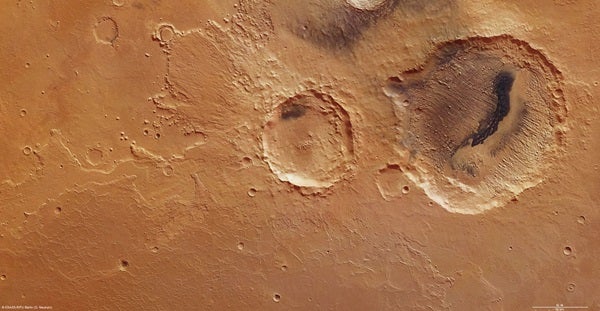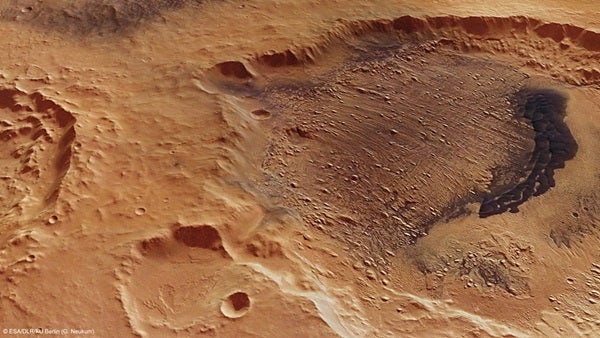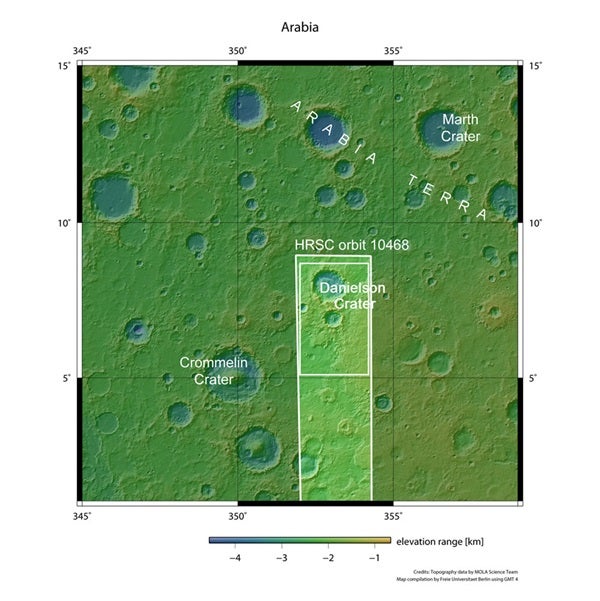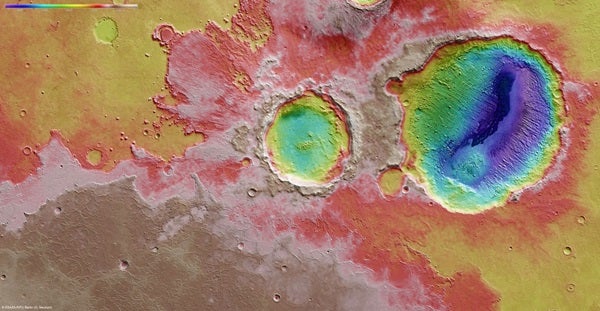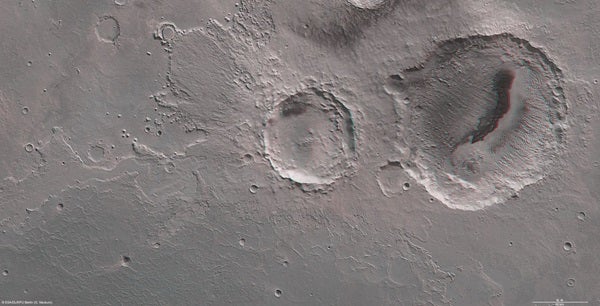On June 19, 2011, Mars Express pointed its high-resolution stereo camera at the Arabia Terra region of Mars, imaging the Danielson and Kalocsa craters.
Danielson Crater is named after the late George E. Danielson, who was instrumental in the development of many spacecraft cameras flown to Mars. Seen to the right (north) in the image, it is the larger crater, roughly 37 miles (60 kilometers) across.
Kalocsa Crater lies in the center of the image and is smaller, about 21 miles (33km) in diameter and about a mile shallower than Danielson. It is named after a town in Hungary famed for its astronomical observatory.
The orientation of the yardangs leads scientists to theorize that strong north-northeasterly winds (from the lower right in the image) both deposited the original sediments and then caused their subsequent erosion in a later drier period of martian history.
A 19-mile-long (30km) field of darker dunes can be seen bisecting the yardangs and is thought to have formed at a later epoch.
Some scientists believe that this indicates periodic fluctuations in the climate of Mars, triggered by regular changes in the planet’s axis of rotation. The different layers would have been laid down during different epochs.
By marked contrast, Kalocsa Crater shows a completely different topography. Here, no layered sediments are seen. This is thought to be due to the higher altitude of its floor, with the crater not tapping in to the suspected underlying ancient water reservoir.
Another hypothesis is that this crater is younger than its neighbor, created when water was not present anymore.

